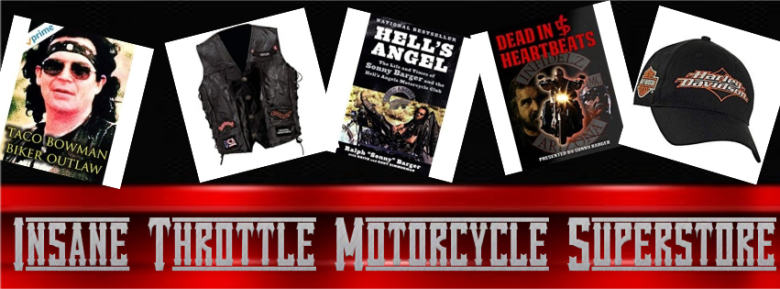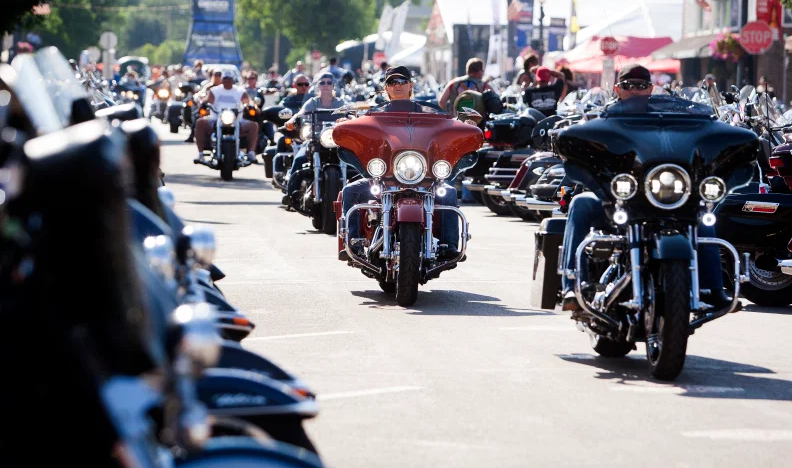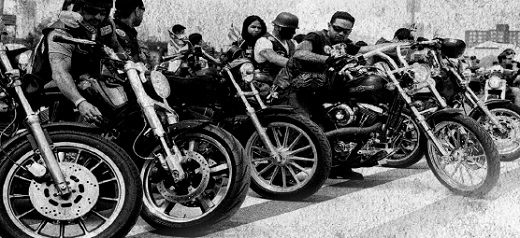
LOS ANGELES — Now that pop stars routinely fly their favorite ink masters around the world for personal appointments and stockbrokers plunk down thousands of dollars to get the Wall Street bull etched on their arms, it can be easy to forget the days when tattoos were still considered outlaw art.
Freddy Negrete learned the craft in the early 1970s while serving a stint at California Youth Authority, a state prison for juvenile offenders. He had been involved in a shooting and later did time for heroin possession and burglaries.
Today, he appears frequently on TV and is a resident artist at the Shamrock Social Club, the most famous tattoo parlor in Los Angeles, where Russell Brand, Lady Gaga, David Blaine and Adele come to get inked.
The shop’s owner, Mark Mahoney, has been on the cover of The Hollywood Reporter and starred in music videos for Lana Del Rey, a client. In August 2018, Selena Gomez arrived with a posse and got the number 4 tattooed on her arm, in honor of her closest female friends. The man who tattooed her was Freddy’s son, Isaiah Negrete, known as Boo Boo.
In his earlier years, Isaiah struggled to become his own person, separate from his world-class tattooer of a father. But that drove Isaiah to get better, according to Mr. Mahoney.
Rather than coasting on his inheritance, he leaned into his genetic potential, executing flawless fine line portraiture that established him as one of the nation’s leading tattoo artists.
One of his best pieces, executed in 2016, was a hyper-realistic street view of East Los Angeles that showed a pair of Converse high tops hanging from a telephone line. It was both a celebration of the West Coast and a lament about poverty and crime.
Three days after Ms. Gomez left the Shamrock with a new tattoo, Freddy found Isaiah’s body on the floor of the Hollywood apartment they shared. A toxicology report has not yet returned from the coroner’s office. Freddy believes his son’s death was related to drugs.
“He would go weeks or months without doing anything,” Freddy, 62, said. “Then he would relapse for a matter of days.”
Tributes to Isaiah, 38, have run on prominent tattoo sites. Customers have deposited candles in front of the store. A fund-raiser for Isaiah’s memorial brought in more than $40,000 in donations.
Such a reaction would be virtually unimaginable in a previous era, before tattooing became mainstream. But the life stories of Isaiah and Freddy Negrete also serve as potent reminders about a past that for many tattooers is still bumping up against the present.
Negrete tattoos are status signifiers, but the history of their makers — broken homes and outlaw culture — is hard to leave behind. Talent and hard work alone can’t erase it.
Back Then
Freddy Negrete’s memoir is called “Smile Now, Cry Later: Guns, Gangs, and Tattoos, My Life in Black and Gray.” The first part of the title refers to a tattoo of two masks he designed while in a correctional facility in California in the early ’70s, when he was a teenager.
With a lifelike grin on one mask and a frown on the other, the tattoo can convey different meanings. “For some,” he writes, “it represents jail time — keep your head up, tough it out on the inside, hold back the tears.”
For others, he writes, it represents the “cholo lifestyle,” which involved “the fast lane,” a “devil may care” attitude and the inevitable collision with reality.
In the ’40s and ’50s, commercial tattoos — eagles, swallows, sharks, pinup girls, skulls and crossbones — were generally executed in a cartoon style, with bright colors and bold black outlines.
As law enforcement on the West Coast clamped down on Mexican immigrants, a new style emerged. With no access to colored ink, prison tattooers assembled machines from the spare parts of cassette tape recorders.
Their setups were primitive, but the work was often more realistic and technically ambitious than tattoos done on the outside. References to gang culture and Catholic iconography among this set also transformed tattooing, adding gravity and sorrow to an art form previously defined by lightness and comedy.
Freddy Negrete grew up in East Los Angeles, and was born into the world of prison tattooing.
When he was a baby, his father, Fernando Negrete — a zoot-suit-wearing pachuco — was convicted of armed robbery after holding up a train station and sent to San Quentin, where he picked up the trade.
According to his book, Freddy was 2½ when his mother, Jacqueline Stearns, was charged with manslaughter after a zip gun in her hand went off at a party, killing another woman.
Freddy is still not sure how long she spent in prison. But with both parents gone, he and his older sister Vicky became wards of the state. At 11, he ran away from his foster home and landed in youth detention. From there, he joined a gang and graduated to more serious crimes.
Prison, he found over the next several years, had its minuses and its pluses. On one hand, he said, “I was exposed to the heroin culture.” On the other, he became the Chicano tattoo world’s first bona fide star.
In 1977, he was out on parole and got a job at Good Time Charlie’s Tattooland, then in East Los Angeles. His boss there was Ed Hardy, the man who helped introduce North America to Japanese tattooing and later licensed his tattoo designs to clothing manufacturers.
According to Mr. Hardy, the shop was located then in the middle of gang territory. “So you had to pay the people who controlled the neighborhood,” he said recently.
Freddy became an essential person on staff, although Mr. Hardy said he didn’t know at the time how in deep Freddy was. “If I had, I probably would have canned him,” Mr. Hardy said.
Then, Freddy fell into heroin addiction.
When he did get sober, in the ’80s, shortly after the birth of Isaiah, he joined an evangelical group and, for a while, traded tattooing for preaching.
According to Taylor Hackford, who used Freddy as a consultant in 1992 on “Blood In, Blood Out,” a drama about Mexican gangsters, Freddy was a model employee during the shoot at San Quentin State Prison. “I know Freddy well, and I know he’s come in and out of drug abuse,” Mr. Hackford said. “But with me, he never missed a day of work and he was never late.”
At First
Isaiah wasn’t Freddy’s only son. He had another boy, Lorenzo, who died in 2004 at the age of 16 from a gunshot wound to the head. He’d become a member of the Sangra gang that Freddy once belonged to. (Freddy had his children with different wives. Both marriages ended in divorce.)

In “Smile Now, Cry Later” Freddy talks with candor about his feeling of responsibility for his son’s death, for being “shot in the head in a war that I’d promoted.” Afterward, though, he began to use heroin more.
In 2007, he was arrested by the police for a parole violation and was sent to county jail, where he suffered three heart attacks. Freddy already had a long arrest sheet, so the prosecutor pressed for a return to prison. But Freddy had tattooed three of the sheriffs at county. And at the request of the captain there, he’d also painted a mural of Michael, the archangel, on a hallway wall.
That captain recommended that he be remanded to treatment. Mr. Mahoney wrote a letter of his own. He had gotten Freddy a slot at a residential rehab, contingent on his release.
Their campaign worked.
After eight months of heavy treatment, Freddy returned to the Sunset Strip, with a job at Mr. Mahoney’s shop. Gangsters still swung by, but they lined up for appointments alongside famous athletes (David Beckham), singers (Adele, Miley Cyrus, Rihanna) and actors (Angelina Jolie, Brad Pitt).
Freddy Negrete thrived.
He attended 12-step meetings and volunteered to help suffering addicts at the facility that got him clean. Isaiah’s speed and cocaine use also tapered off as their careers grew, according to Mr. Mahoney.
Along the way, the rise of social media — particularly Instagram — gave tattooers like Freddy and Isaiah a promotion vehicle the likes of which their profession had never seen.
In 2012, Ariana Grande arrived at the Shamrock with a camera crew as she got her first tattoo: a tiny heart on her right foot. In 2015, Isaiah appeared on “The Late Late Show With James Corden,” where he tattooed Harry Styles.
When Freddy published his memoir, the first person he thanked was Isaiah, whom he described as his “inspiration” and “driving force in life.” Shortly after the book’s release, the Natural History Museum of Los Angeles staged a retrospective and prominently featured Freddy and Isaiah’s work in it.
“They were on top of the world,” Mr. Mahoney said.
And Then
With Isaiah gone, everyone at the shop is in mourning.
“Can you imagine losing two sons?” Mr. Mahoney said on a recent afternoon, standing inside the entrance near candles left by customers. “It’s beyond imagining.”
Freddy was seated nearby, looking exhausted after weeks of crying.
Tattooing others has anchored him some as he grieves the loss.
“I go on autopilot,” he said. “I’ll be tattooing and thinking about something completely different, and then I go into the bathroom and pray for strength. I try to focus on the tattoo. Maybe they’ll come out better now. It’s not easy, but it helps me. I feel my own sense of purpose. Tattooing has always saved me in the past. Now I’m faced with this new chapter. I have to find my way.”
Source NY TIMES







